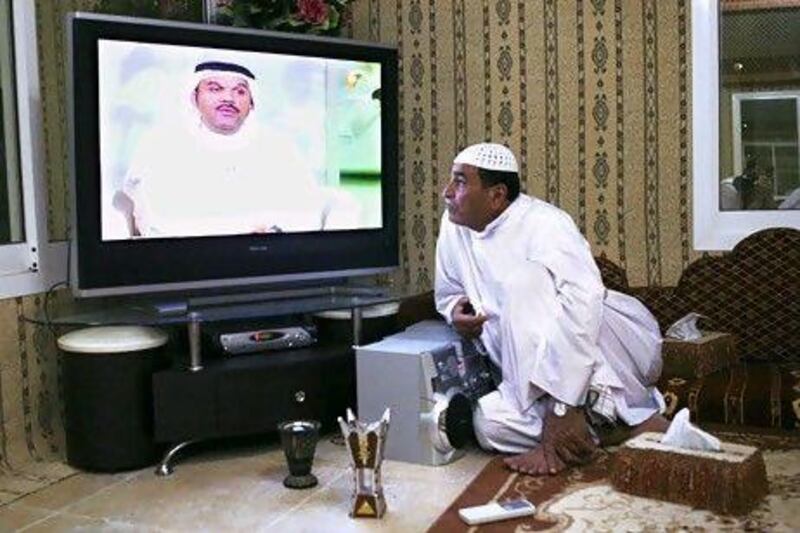Commercial breaks lasting more than 20 minutes are prompting UAE television viewers to reach for the remote control.
The situation is raising serious concerns for the region's US$1 billion (Dh3.67bn) television advertising industry.
The largest broadcasters are showing up to 76 commercials in a single break, prompting viewers to switch stations, according to data from the Emirates Media Measurement Company (EMMC).
"People leave during a long ad break," said Chris O'Hearn, EMMC's general manager.
The longest single ad break observed earlier this month was 24 minutes in duration, and was comprised of 76 individual commercials. More than 2,000 breaks were more than five minutes in duration, according to EMMC data.
The average advertising break observed across five of the leading Arabic channels stands at three minutes and 30 seconds, EMMC said.
Advertising executives said that was above the recommended average ad-break duration of three minutes.
"The ideal norm is about 15 minutes of commercial air-time per hour, and 45 minutes of actual programming," said Bhaskar Khaund, the regional TV planning director at the media agency MEC.
"But it's not being followed by everyone. There are groups that go well beyond this, and air much longer breaks," he added.
"Either the ad break itself is a lot longer, or there are too many of those breaks, or both."
Mr Khaund said some stations would attract lower advertising rates if they had too many commercials.
Some broadcasters had regulated themselves to limit the length of commercial breaks, Mr Khaund said.
But he added that government legislation on the length of breaks - as is common in other markets such as the UK - was unlikely to work in this region.
The length of breaks is just one statistic provided by EMMC's "people meters" audience-measurement system, which has issued its first public figures on TV viewership patterns in the UAE.
Mr O'Hearn said the data on dips in audiences during ad breaks could prompt broadcasters to change their scheduling, and for a change in the type of advertising aired.
"Advertising will become more of an entertainment in itself," he said.
Emirates Media Measurement Company is supported by Abu Dhabi Media - which owns and publishes The National- along with the Sharjah Media Corporation, Rotana, Etisalat and du. It is chaired by the National Media Council.
Mr O'Hearn said the availability of more accurate audience data could "increase the overall size" of advertising spending in the region.
The broadcaster MBC, based in Dubai, dominates the airwaves in the UAE, with six of its channels ranking among the 10 most popular stations.
Part of the purpose of the EMMC system is to help advertisers allocate their spending to particular channels by offering detailed information on who is watching particular channels at what times.
Media agencies said they were still evaluating the EMMC data.
"As an industry, we're not endorsing the data yet, because it's still under testing," said Elie Khouri, the chief executive of Omnicom Media Group in the Middle East and North Africa.
Mr Khouri added the EMMC data - although specific to the UAE - could point to wider regional trends. "The UAE is a small market in terms of TV investments. Hence, I don't think it will have a major impact on the regional players," he said. "What it will do, however, is … give a direction in terms of where the market is, the reality. There's definitely a positive side to it, even at regional level," he added.
twitter: Follow our breaking business news and retweet to your followers. Follow us





